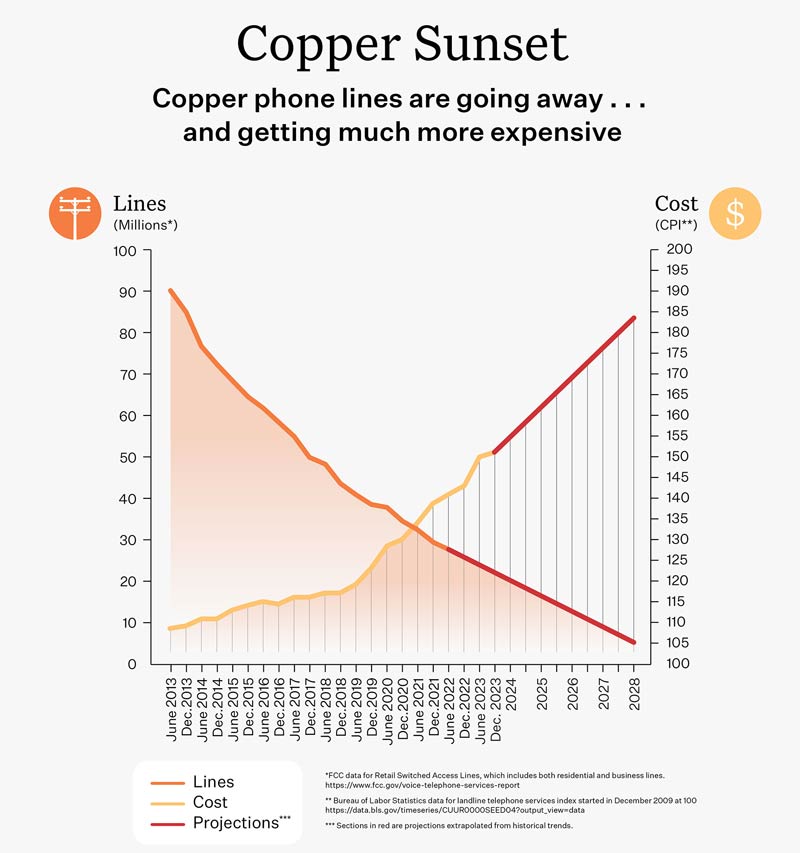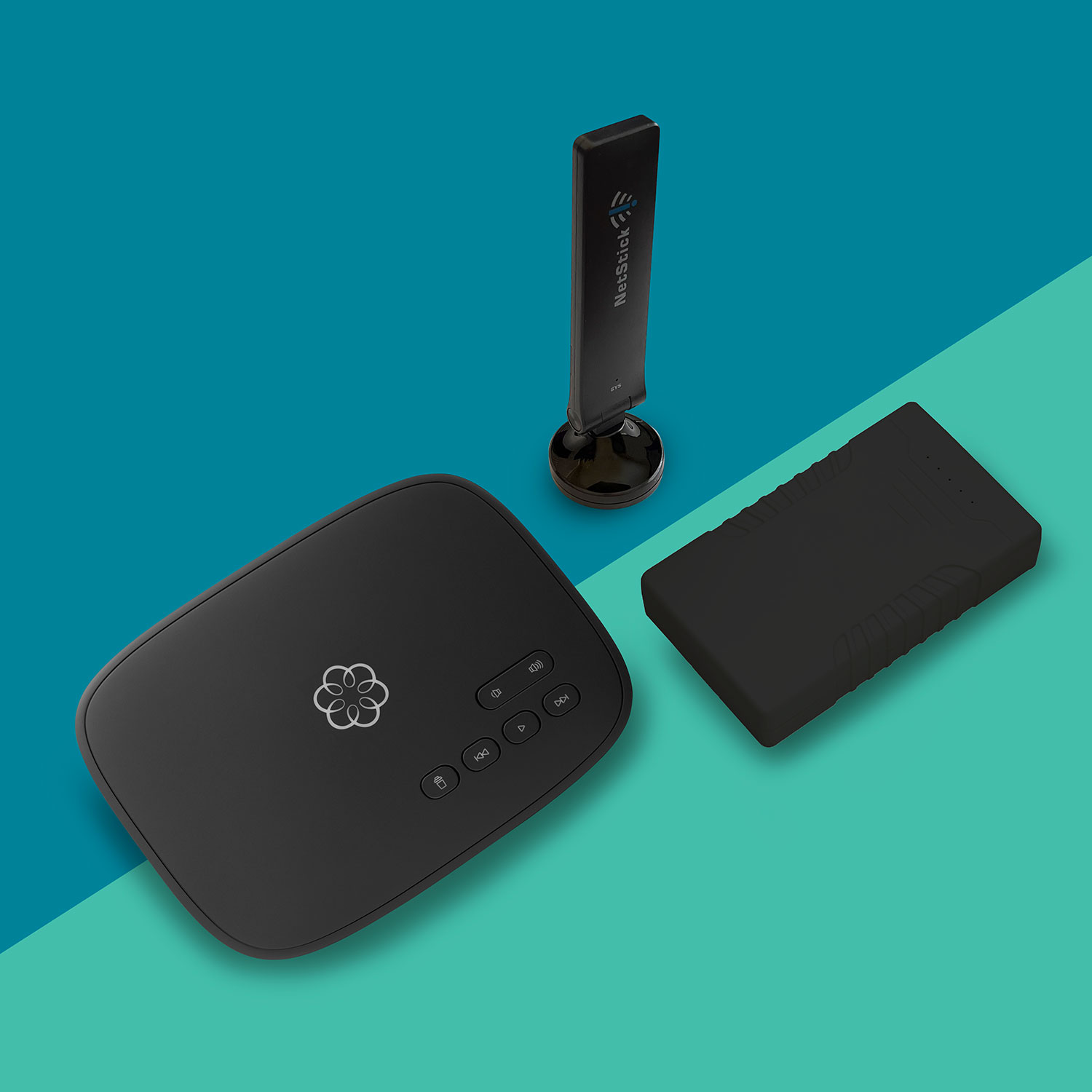Why your landline home phone is getting more expensive and less reliable

Is a horse and buggy your primary means of transportation? Do you get deliveries of big blocks of ice to keep your food cold? Do you brighten your house at night with oil lamps?
Probably not. Yet millions of homes in the United States still pay money every month for another 19th century technology: landline phone service delivered over legacy copper wiring, also known as plain old telephone service or POTS.
POTS is reaching retirement age after a very long run. It all began March 10, 1876, when Alexander Graham Bell famously barked, “Mr. Watson, come here, I want you,” to his assistant. After almost 150 years, it’s no surprise that other technologies—primarily mobile networks and Voice over Internet Protocol (VoIP) phone service—have largely eliminated the need for POTS.
POTS is fading into the sunset
This copper sunset impacts legacy home phone service in two major ways: higher rates and reduced reliability.
Why is this happening? Three things are coming together at once.
First, POTS lines are dwindling
Data from the Federal Communications Commission shows the number of POTS lines in the United States plummeted by nearly 100 million lines from approximately to 127 million in late 2009 to 27 million in mid-2022. If copper-wire lines continue to decline at the current rate, as shown in the chart below, there will be few or none left by 2029.

The FCC acknowledged the inevitable end of POTS, which they describe by another acronym—PSTN (Public Switched Telephone Network). In a 2019 order, the FCC declared, “The PSTN is headed toward an inevitable sunset.”
After decades of tightly regulating phone companies to keep POTS rates reasonable and maintain high reliability, the agency no longer sees any reason to require carriers to continue offering copper-wire service.
“Policies that encourage reliance on outmoded legacy services, by carriers and customers alike, serve no beneficial public interest purpose,” the 2019 order continued. So, if your home still has POTS lines, the federal government’s position is that you’ve got to deal with it on your own.
AT&T, the nation’s largest provider of POTS, drove home the point on March 11, 2022, during a meeting with financial analysts and investors. It announced a plan “to reduce our copper footprint 50 percent by 2025.” That was a polite way of AT&T saying half their remaining POTS customers will be cut off within three years.
Second, POTS lines are becoming more expensive.
The FCC and state regulators largely removed price caps on POTS lines. Phone companies are taking advantage of this by significantly increasing monthly rates even as fees for other telecom services, such as mobile phones, are being driven down by intense competition. The U.S. Bureau of Labor Statistics data indicates the cost of POTS home phone service has risen 40 percent from December 2013 to December 2023, also shown in our chart. If this trend continues, the Consumer Price Index (CPI) could be as high as 172 in 2027.
POTS home phone lines today typically cost $50 a month or more. The price hikes are even more dramatic for businesses: Ooma is hearing from a number of our business customers that their POTS lines are rapidly rising. One business shared its July and August 2023 statements showing their legacy phone bill had increased by 649 percent in a one-month period!
Third, reliability for POTS lines is declining.
Many people still paying for POTS lines like the idea of having a phone that almost always has a dial tone, especially during storms and power outages.
In theory, phone companies are between a rock and a hard place because they have fewer customers to share the cost of maintaining their copper-wire infrastructure, such as phone poles and switching centers.
In reality, it appears some carriers seized the opportunity to increase prices while giving less attention to their POTS networks.
The California Public Utility Commissions, in an April 2019 report, found multiple instances of neglect by AT&T, the state’s primary provider of POTS lines.
“It is clear that AT&T California has been consistently disinvesting in its California local network infrastructure,” the report said. “AT&T appears to have adopted a ‘harvesting strategy’ for legacy POTS services. AT&T has ceased active marketing of POTS and has degraded POTS service quality and its responses to trouble reports, relying instead upon successive price increases and customer inertia to maintain its revenue stream, albeit decreasing, for an extended period of time.”
The report added: “Telephone service outages appear to be highly dependent upon weather conditions, specifically, the amount of precipitation in the area served. The strong relationship between rainfall and the rates of service outages provides a strong indication that the AT&T distribution network is not as robust as it needs to be, and lacks the resiliency to withstand significant weather events.”
In other words, a POTS home phone line may no longer be the security blanket it once was.
How to move your home phone service to the 21st century and save money!
The FCC further emphasized its view on copper sunset in their 2019 order by saying: “Insofar as particular end users steadfastly remain reliant on (POTS) as a matter of preference, we likewise are not persuaded that the Commission must ‘protect’ every preference some customers might have, especially in the face of alternative options for obtaining voice services.”
The most common “alternative option” for home phone service is VoIP, which is typically less expensive than copper-wire landlines and offers more features.
Ooma home phone service is free, with customers only paying applicable taxes and fees—typically just $5 to $8 per month. Getting started requires an Ooma Telo device, which can cost less than $100, as a bridge between the internet and a home’s existing corded or cordless handsets.
Ooma customers also have the option to upgrade to the Premier plan for an additional $9.99 a month to get advanced services, such as a second phone number, enhanced robocall blocking and voicemail messages delivered as audio files by email.
The Ooma Telo LTE Safety Phone

For those who want the comfort of a home phone that will work during power and internet outages, there’s the Ooma Telo LTE Safety Phone, which comes with a 10-hour backup battery and an adapter that makes a wireless internet connection. The unit costs just $129.99 and monthly service is only $19.99 plus applicable taxes and fees.
In short, if you still have a POTS line at home, now is the time to move beyond copper sunset by switching to VoIP. You’ll flip the script from paying more for less to paying less for more. The future is here!



